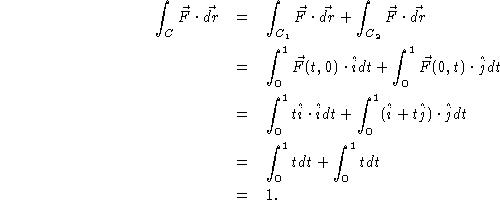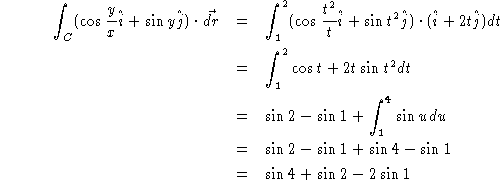

Notice that this is the same answer as in the previous example, even though we used a different path of integration. This happened because the vector field is a speacial type of vector field. The entire next chapter will be devoted to studying the interesting properties of these fields, called conservative vector fields. To see that this doesn't always work, try the integrating the vector field over the same two paths.
